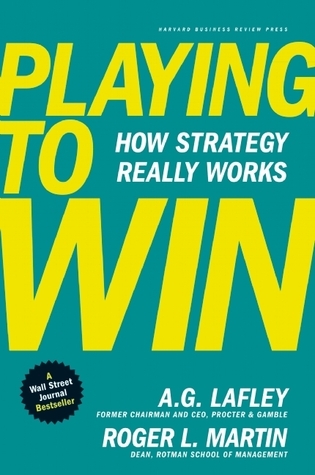In exploring leadership and organizational strategies, I’ve often navigated the delicate balance of language and its impact on team dynamics and individual mindset. The concept of ‘winning’ can be a double-edged sword—while it inspires some, it might instigate fear or paralysis in others who dread the prospect of losing. This aversion to a win/lose dichotomy has led me to seek a more nuanced approach in my work and teachings. However, in the realm of strategic thinking, A.G. Lafley and Roger L. Martin’s “Playing to Win: How Strategy Really Works” employs the ‘winning’ terminology in a manner that is both effective and enlightening.
“Playing to Win” delves into the essence of strategy, stripping it down to its most fundamental questions. Drawing from their remarkable turnaround of Procter & Gamble (P&G), the authors present a compelling narrative that strategy, at its core, is about choice—specifically, where to play and where not to play. This perspective is crucial; it emphasizes the strategic decisions about markets, segments, and categories essential for any organization’s success. Lafley, the celebrated CEO of P&G, and Martin, his close advisor and strategic thought partner, showcase through their partnership how leadership at the top, complemented by strategic advisement, can harmonize to make those pivotal decisions.
Their framework pivots around five essential questions that guide strategic thought and action:
- What is our winning aspiration? This question centers on the organization’s purpose and the ultimate goal of its strategy. It’s about defining what ‘winning’ looks like for the company.
- Where will we play? This involves choosing the markets, customer segments, channels, or product categories in which the company will compete. It’s about focusing efforts where the company can achieve a competitive advantage.
- How will we win? This question requires determining the unique value proposition and the set of activities that will deliver this value better than competitors. It’s about identifying the company’s unique approach to serving its chosen markets.
- What capabilities must we have in place to win? This addresses the internal strengths and abilities the company needs to develop or maintain to support its strategy. It’s about aligning resources and capabilities with the strategy.
- What management systems are required to support our choices? This final question focuses on the structures, processes, and measures needed to ensure the organization can effectively implement its strategy and achieve its goals.
Their approach to ‘where to play’ and ‘how to win.’ It’s a refreshing take that moves beyond the binary of winning and losing, focusing instead on strategic choices and execution. This methodology provides a blueprint for making informed decisions that align with an organization’s overarching goals and values.
The synergy between Lafley and Martin exemplifies the profound impact of a collaborative leadership model. Their partnership at P&G—combining Lafley’s executive leadership with Martin’s strategic insight—serves as a powerful example of how high-level leaders and their advisors can work together to steer an organization towards its strategic objectives.
In “Playing to Win,” the win/lose dichotomy is recontextualized as a framework for thoughtful, strategic decision-making. It’s a testament to the nuanced approach needed in leadership and strategy, one that I find both valuable and aligned with the ethos of seeking deeper understanding and effectiveness in organizational dynamics.
With its focus on strategic clarity and actionable insights, this book offers valuable lessons for leaders looking to navigate the complexities of the business world. It reminds us that the essence of strategy is not the pursuit of winning for its own sake but making deliberate choices that propel an organization forward.

